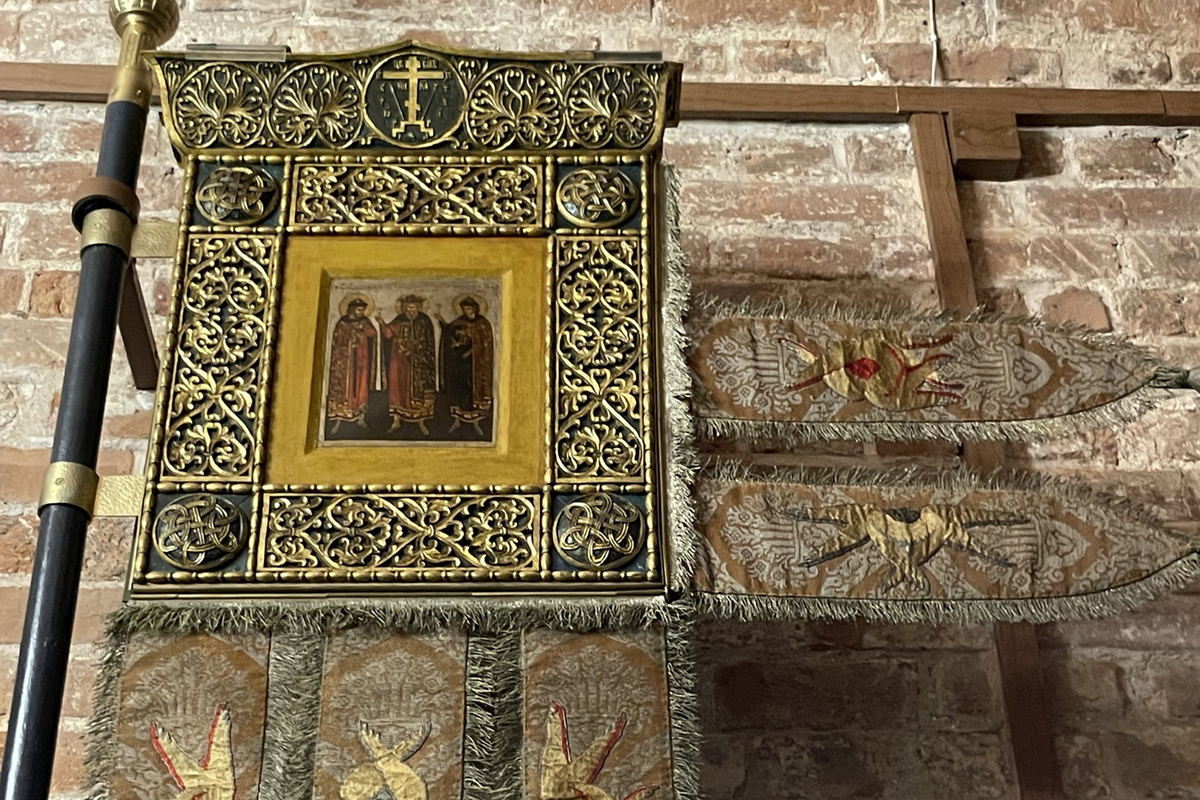Banners that had disappeared for 100 years have returned to St. Basil’s Cathedral
[ad_1]

Restoration of antiques has been completed
The Cathedral of the Intercession of the Blessed Virgin Mary on the Moat, better known as St. Basil’s Cathedral, has been replenished with updated exhibits. After a complex restoration, two banners appeared on display in the museum where services are held, which no one had seen for a hundred years.
Last year, two iconostases were replaced there, in which eight restored icons are now installed. The complexity of the “operation” lay not only in the work of the restorers in restoring monuments of ancient Russian icon painting, but also in choosing the right moment and inserting them into a special movable iconostasis. The fact is that in the 16th century cathedral there is no system of temperature and humidity conditions.
In such a situation, exhibits can only be disturbed during periods of stable temperature. At the moment of the change of season, when the thermometer scale jumps back and forth, when there is heavy rain or heat outside, it is better not to touch the exhibits. “The restoration work was carried out very quickly and was extremely complex,” admitted the director of the Historical Museum, Alexei Levykin, who is in charge of the Intercession Cathedral Museum.
One of the main events is the appearance in the Intercession Cathedral of a restored 16th-century icon of Our Lady of Vladimir, which was once located in another church located next door. We are talking about the Church of the Conception of Anna in Zaryadye, which was closed due to the demolition of the Rossiya Hotel and has not yet opened. From the 1920s until the 1990s, the temple also did not work. Like many churches, the Bolsheviks did not spare the temple in Zaryadye. Some monuments from there at the dawn of Soviet times ended up in the collections of the Historical Museum. Our Lady of Vladimir arrived in 1935, and from there came to the Intercession Cathedral. The icon was in poor condition. Chips on the wood, damage to the paint layer, marks from the nails that once attached the image to the wall – these are the issues that the specialists of the Grabar Center solved. Now the icon has taken pride of place at the entrance in a separate display case, which, however, does not have special climatic conditions. According to the head of the department of ancient Russian painting of the Historical Museum, Lyudmila Tarasenko, the icon will have to get used to new conditions. “Now the temperature and humidity conditions are close to museum conditions,” she explained to MK. — Monuments are gradually adapting to the conditions. The temple is not heated in winter.”
That is why for other restored icons it was necessary to make a special movable iconostasis. Historical ones – from the 16th century – were replaced with new ones at the beginning of the 20th century as part of the so-called museum experiment. But since then they have become very dilapidated. The new iconostases in the Church of Alexander of Svir and the Church of St. Gregory of Armenia, which are part of the Intercession Cathedral, were made in such a way that each of the icons could be taken out at any time (previously it was necessary to take out everything to get to one). And the main nuance is that the icon boards react to changes in temperature and humidity, either shrinking or diverging. The new iconostases take into account the peculiarities of the behavior of monuments in conditions where there is no stable temperature.
After restoration, seven 16th-century icons from the Deesis order returned to the iconostasis of the Church of St. Svirsky. Until 1925 they were located in the Guslinsky Spaso-Preobrazhensky Monastery. Before restoration, they were heavily soiled, had chips and damage to the paint layer, and the original painting was difficult to recognize under the layers of numerous renovations. The difference is especially clearly visible if you compare the icons with the bottom row, which has not been restored.
But the main event announced by the staff of the Historical Museum was the restoration of the paired banners. The inlay icons themselves were painted in the 16th century, and the banners in the form of flags were created in the Art Nouveau style at the turn of the 19th–20th centuries. The icons are framed in metal frames and decorated with elegant embroidery with tassels and fringe, so several departments at the Grabar Restoration Center worked on their restoration. For more than a hundred years, the banners were in the collections of the Historical Museum and have now become a real discovery.
Newspaper headline:
Shrines returned to the Intercession Cathedral
[ad_2]
Source link






